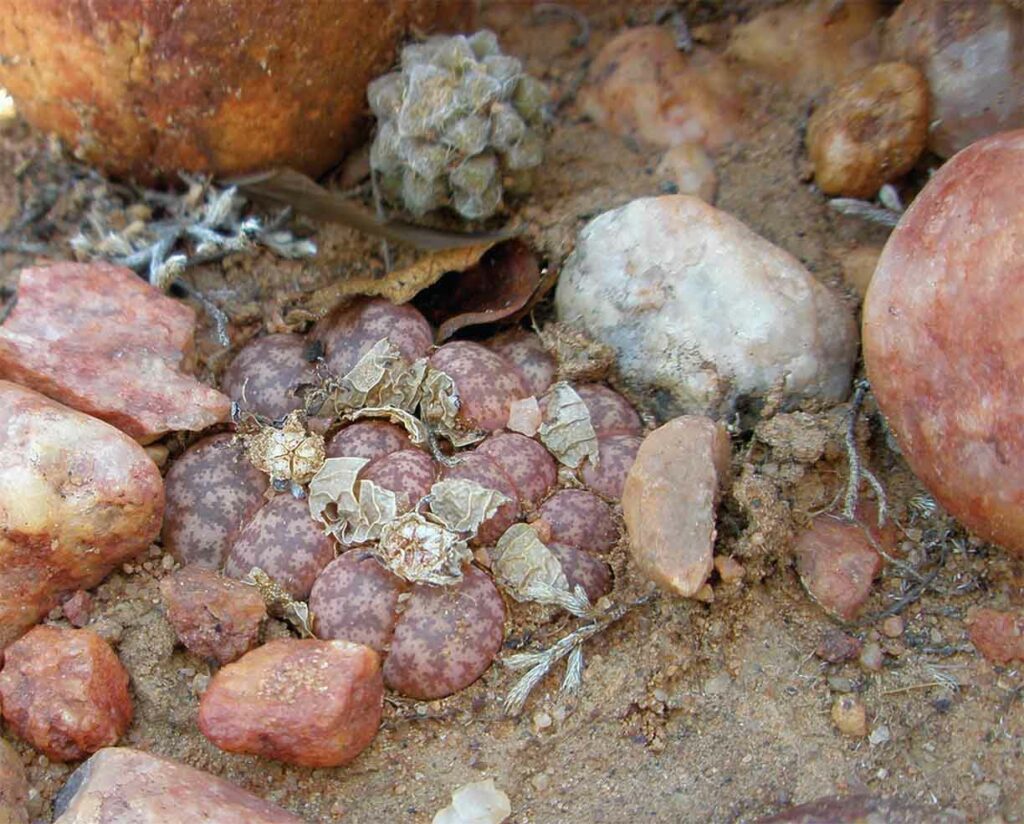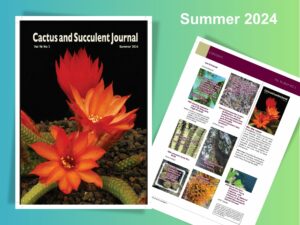
Let’s start with a summary of the problem, excerpted from the article:
Lithops coleorum Hammer & Uijs is undoubtably the most endangered and rarest Lithops species in habitat at present. It was first discovered early in 1992 when Anton van Buuren came across these plants on a farm west of Mokopane, South Africa…
The plants occur in a relatively small area of stained quartzite pebbles mostly of alluvial origin surrounded by thickets of trees and scrubs… during the initial visit to the colony in 1992, the total population was estimated to be at least 400 plants…
The latest count in 2022 put the population at 14 plants at these two locations.
…it seems as if the majority of the plants were removed from habitat by collectors eager to get this new species into their collections. Furthermore, a large area of the open rock and pebble habitat was fenced off from the thick and often impenetrable surrounding bush and heavy hoofed animals such as horses and donkeys were kept within the fenced area. This practice surely crushed and thus destroyed many of the plants.
The decline in the population to this level is of serious concern and drastic measures are needed to safeguard the few plants still in habitat. The Lithops Research and Conservation Foundation moved the colony restoration project of Lithops coleorum to the top of the conservation priorities list after the 2022 visit to the colonies…
The project to save Lithops coleorum has already begun, and will take up to a decade of collaborative effort to reestablish a viable population of at least 100 plants. Aspects of the project include monitoring the population, growing plants ex situ to replant, spreading of cultivated seed on the sites, and measures to protect plants from predation. Read the full story in this free article PDF from the Cactus and Succulent Journal special Conservation issue.
The Lithops Foundation is grateful for the financial support from the CSSA which enabled us to get the project off the ground.
Roy Earlé
Help us conserve xerophytic plants and desert ecosystems through your membership or an earmarked donation.




